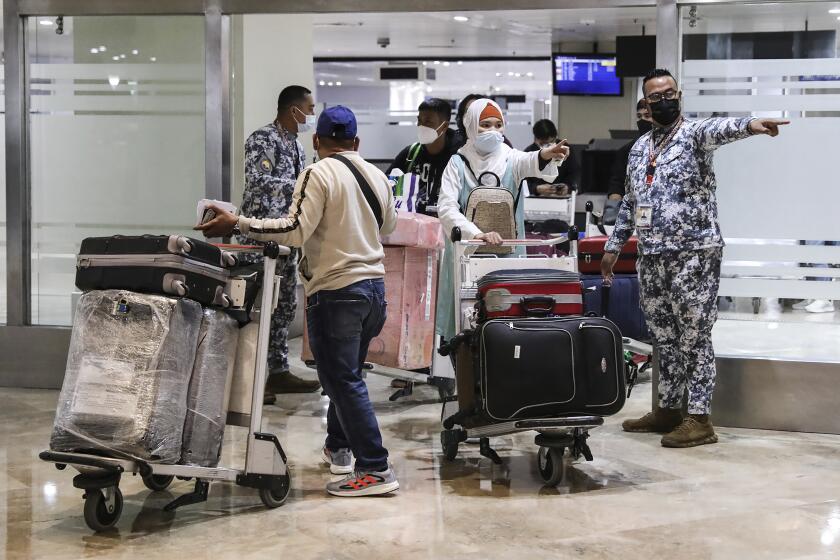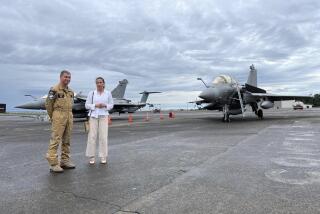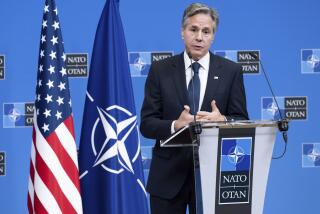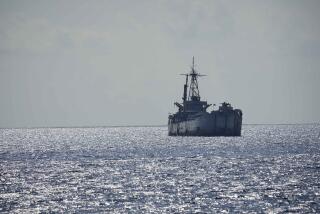U.S. and Philippine forces stage large war exercises likely to rankle China
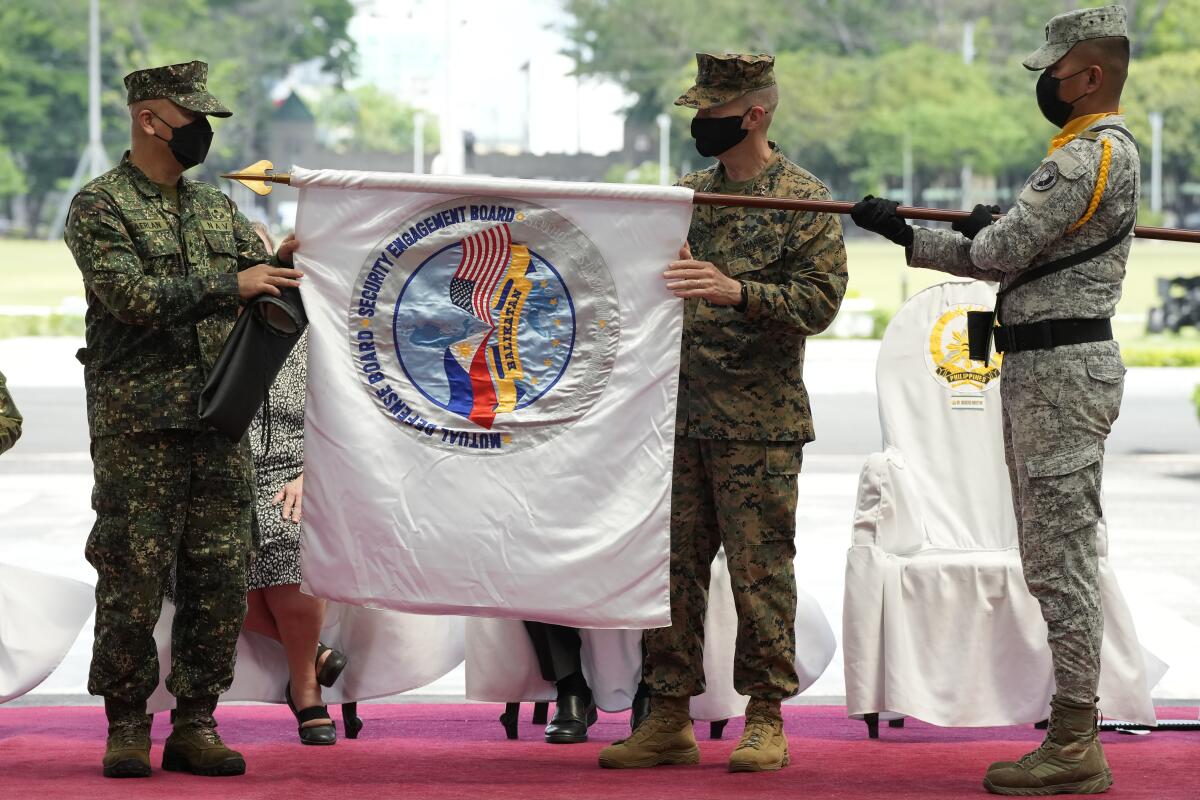
- Share via
MANILA — Thousands of American and Philippine forces on Monday began one of their largest joint combat exercises in years, including drills of live-fire maneuvers, aircraft assaults, urban warfare and beach landings in a showcase of U.S. firepower near the Philippines’ sea border with Taiwan.
The annual exercises, called Balikatan — Tagalog for “shoulder to shoulder” — will run up to April 8 with nearly 9,000 navy, Marine, air force and army troops, including 5,100 American military personnel, to strengthen the longtime allies’ “capabilities and readiness for real-world challenges,” U.S. and Philippine military officials said.
China will likely frown on the war drills given their relative proximity to Taiwan, which it claims as Chinese territory, but organizers said the exercises do not regard any particular country as a target.
“The U.S. military and Armed Forces of the Philippines will train together to expand and advance shared tactics, techniques and procedures that strengthen our response capabilities and readiness for real-world challenges,” said Maj. Gen. Jay Bargeron, the U.S. 3rd Marine division’s commanding general. “Our alliance remains a key source of strength and stability in the Indo-Pacific region.”
First staged in 1991, the Balikatan exercises are anchored on the 1951 Mutual Defense Treaty, which commits the United States and the Philippines to come to the aid of the other in case of an attack. The allies aim to be strong and ready for any security contingency as a deterrence against war. “It’s for mutual defense, never for offense,” Philippine military spokesman Col. Ramon Zagala said.
The treaty alliance “declares formally our sense of unity and determination to mutually defend against external armed attack, so that no potential aggressor could be under the impression that either of them stands alone,” Zagala told the Associated Press.
Filipino American cultural values contribute to a strong sense of community but may also lead to nuanced challenges when navigating depression, anxiety and suicidal ideation.
But the governor of northern Cagayan province, where amphibious landings with limited live-fire maneuvers were scheduled to be held in the coastal town of Claveria this week, has opposed any joint exercise using gunfire, fearing it could antagonize China.
“The military consulted and asked me, but I said I cannot allow any live-fire exercise. Any exercise is OK but live-fire,” Cagayan Gov. Manuel Mamba told the AP. “We have to engage China but not in a war, because I know Taiwan is a powder keg.”
China, the U.S. and Taiwan have all expressed interest in investing in Cagayan, which has underdeveloped agriculture and related industries, Mamba said, adding: “I’m not pro-China, I’m pro-Cagayan.”
A Philippine military official said the beach landing exercises would proceed in Claveria without any live-fire training, which would be held instead at Crow Valley, an aircraft gunnery range in Tarlac province south of Cagayan.
The Philippine government is hoping to boost its crucial tourism industry by lifting its pandemic-induced ban on foreign travelers.
The combat exercises in the northern Philippines are being held amid heightened tensions between self-governed Taiwan and archrival mainland China. But Zagala said most of the military maneuvers had been planned a year ago and did not take the recurring tensions in the Taiwan Strait into consideration.
In what it calls a warning to Taiwanese independence supporters and their foreign allies, China has been staging exercises and flying military planes near the island’s airspace, including Feb. 24, when Russia began its invasion of Ukraine.
Chinese officials, led by President Xi Jinping, say they are committed to using peaceful means to bring Taiwan under Beijing’s control. The U.S. has consistently expressed its support for ensuring that Taiwan can defend itself, and Chinese military action against the island in the short to medium term is generally considered a remote possibility.
Maj. Kurt Stahl of the 3rd U.S. Marine division said that, while most combat exercises and humanitarian projects would take place in the Philippines’ north, some maneuvers would be staged on the western island province of Palawan, along with an air-defense exercise featuring U.S. and Philippine fighter aircraft around the western side of Luzon.
Hard-won access to family planning has diminished during the pandemic, with a resulting surge in births expected to strain healthcare resources.
That region faces the disputed South China Sea, where China’s increasingly assertive actions, including the building of missile-protected island bases to reinforce its vast territorial claims, have sparked protests from rival claimants such as the Philippines and Vietnam, along with condemnation from the U.S. and its Western and Asian allies.
The large-scale U.S.-Philippine exercises reflect how outgoing President Rodrigo Duterte has walked back on his earlier threat to restrict U.S. military activities in the Philippines. He has nurtured closer ties with China and Russia while often criticizing U.S. security policies.
In July of last year, Duterte reversed his termination of a key defense pact with Washington that allows large-scale combat exercises of U.S. and Philippine forces like the Balikatan, after the U.S. provided millions of doses of COVID-19 vaccine that he had publicly demanded.
President Biden has said that America’s vaccines were being donated to poorer countries at the time to save lives and not to build “pressure for favors or potential concessions.”
More to Read
Sign up for Essential California
The most important California stories and recommendations in your inbox every morning.
You may occasionally receive promotional content from the Los Angeles Times.

